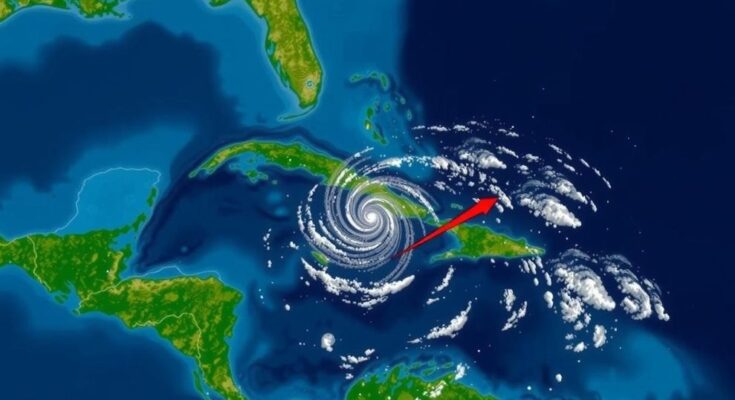Hurricane Rafael has intensified to a Category 3 storm with winds of 120 mph, but current forecasts suggest it will move away from Florida and weaken. A trough of low pressure near Puerto Rico is producing heavy rain but has low development chances. Potential hazards include life-threatening surf and rip currents along the Gulf Coast. The hurricane season runs until November 30, necessitating continued vigilance among residents in affected areas.
The National Hurricane Center has reported that Hurricane Rafael has intensified into a Category 3 storm, boasting maximum sustained winds of 120 mph. Despite this strengthening, recent forecasts indicate that Rafael is likely to drift away from the U.S. coast and weaken as it traverses the Gulf of Mexico over the upcoming days. Concurrently, a trough of low pressure near Puerto Rico is generating heavy rainfall and thunderstorms, although the potential for this system to develop further is deemed low. Rafael has already impacted western Cuba, disrupting the island’s electrical grid. It is currently being influenced by a mid-level ridge that is directing the storm westward, distancing it from Florida and potential landfall. AccuWeather meteorologist Bernie Rayno noted that increasing wind shear will likely cause Rafael to weaken, thus diminishing its wind intensity. However, the storm will still result in hazardous surf and rip current conditions along the Gulf Coast, necessitating caution for those in the area. As of the latest update from the NHC, the storm’s position is 24.5N 88.0W, situated approximately 245 miles north-northeast of Progreso, Mexico, and moving westward at 9 mph with a central pressure of 956 MB. Forecasts indicate swells from Rafael will affect most of the Gulf, leading to life-threatening conditions over the next few days. Monitoring of a nearby trough of low pressure is ongoing, with minimal chances for development highlighted. The Atlantic hurricane season, which spans from June 1 to November 30, continues to be a period of significant weather activity, requiring vigilance and preparedness. Residents are advised to stay informed about any developments regarding tropical systems and anticipate the possibility of adverse weather conditions. Weather alerts can provide timely updates, allowing for adequate preparation. Although the threat of Hurricane Rafael making direct landfall in Florida appears limited, all residents are encouraged to remain vigilant and updated.
Hurricane Rafael, recently upgraded to a Category 3 storm, is currently being tracked by the National Hurricane Center. The hurricane season, which spans from June to November, usually brings several tropical storms and hurricanes to the Atlantic basin, which includes the Caribbean Sea and Gulf of Mexico. Understanding the patterns of hurricane tracking and forecasting is crucial for residents in potentially affected regions, especially as storms can change direction and intensity rapidly.
In summary, while Hurricane Rafael has grown in strength, its projected path appears to veer away from the U.S., particularly Florida. Nevertheless, the risks associated with swells and surf conditions remain significant along the Gulf Coast. Residents should remain alert and informed of any weather updates as the hurricane season continues until the end of November.
Original Source: www.timesreporter.com




